Abstract
The possibility that differences in stomatal conductance between upper and lower surfaces of amphistomatous leaves are adaptations to differences in CO2 exchange characteristics for the two surfaces was investigated. The ratio of upper to lower stomatal conductance was found to change little in response to light and humidity for well-watered sunflower (Helianthus annuus L.) plants. Stressing the plants (ψ = −17 bars) and rewatering 1 day before gas exchange measurements reduced upper conductance more severely than lower in both indoor- and outdoor-grown plants, and caused small changes in conductance ratio with light and humidity. A similar pattern was found using outdoor grown sunflower and cocklebur (Xanthium strumarium L.) plants. Calculated intercellular CO2 concentrations for upper and lower surfaces were always close to identical for a particular set of environmental conditions for both sunflower and cocklebur, indicating that no differences in CO2 exchange characteristics exist between the two surfaces. By artificially creating a CO2 gradient across the leaf, the resistance to CO2 diffusion through the mesophyll was estimated and found to be so low that despite possible nonhomogeneity of the mesophyll, differences in CO2 exchange characteristics for the two surfaces are unlikely. It is concluded that differences in conductance between upper and lower stomates are not adaptations to differences in CO2 exchange characteristics.
Full text
PDF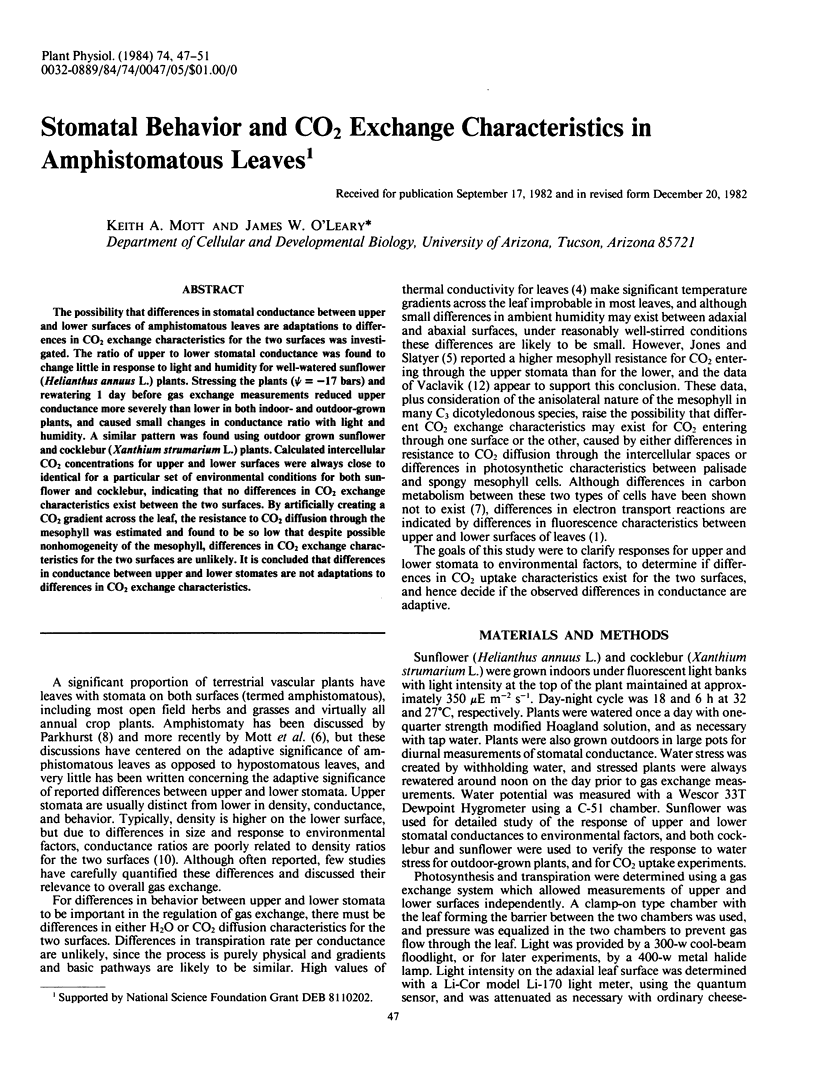
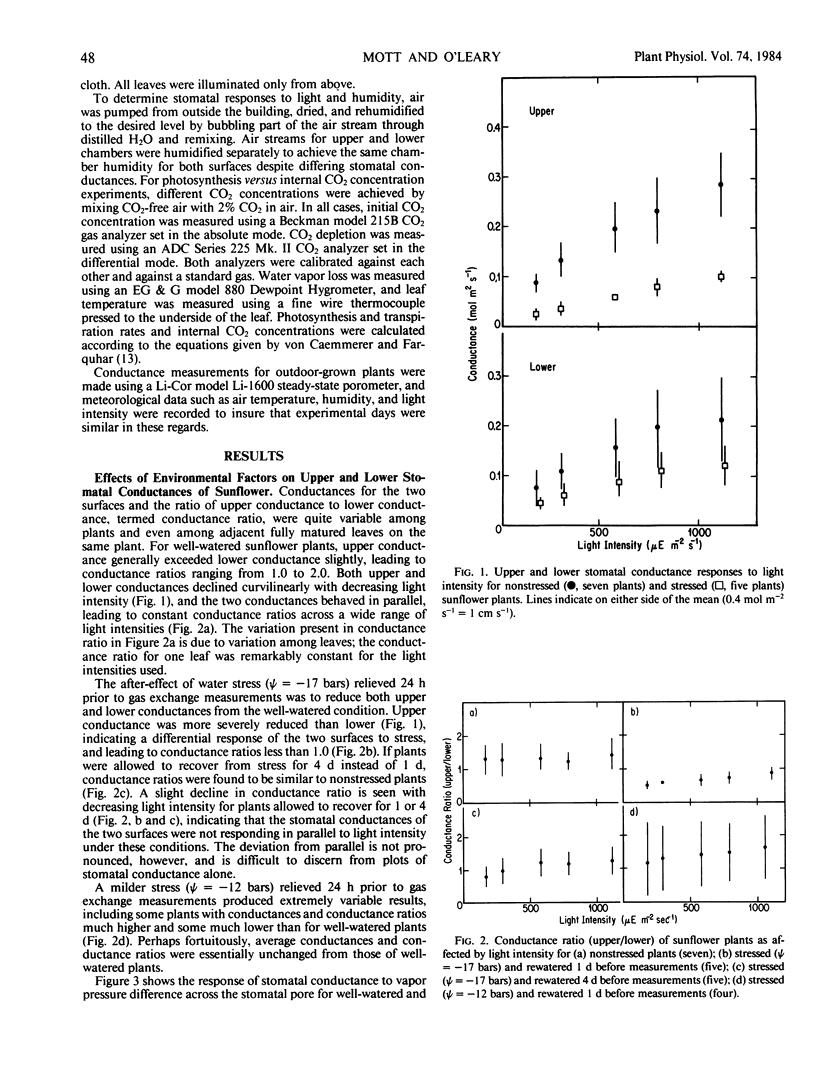
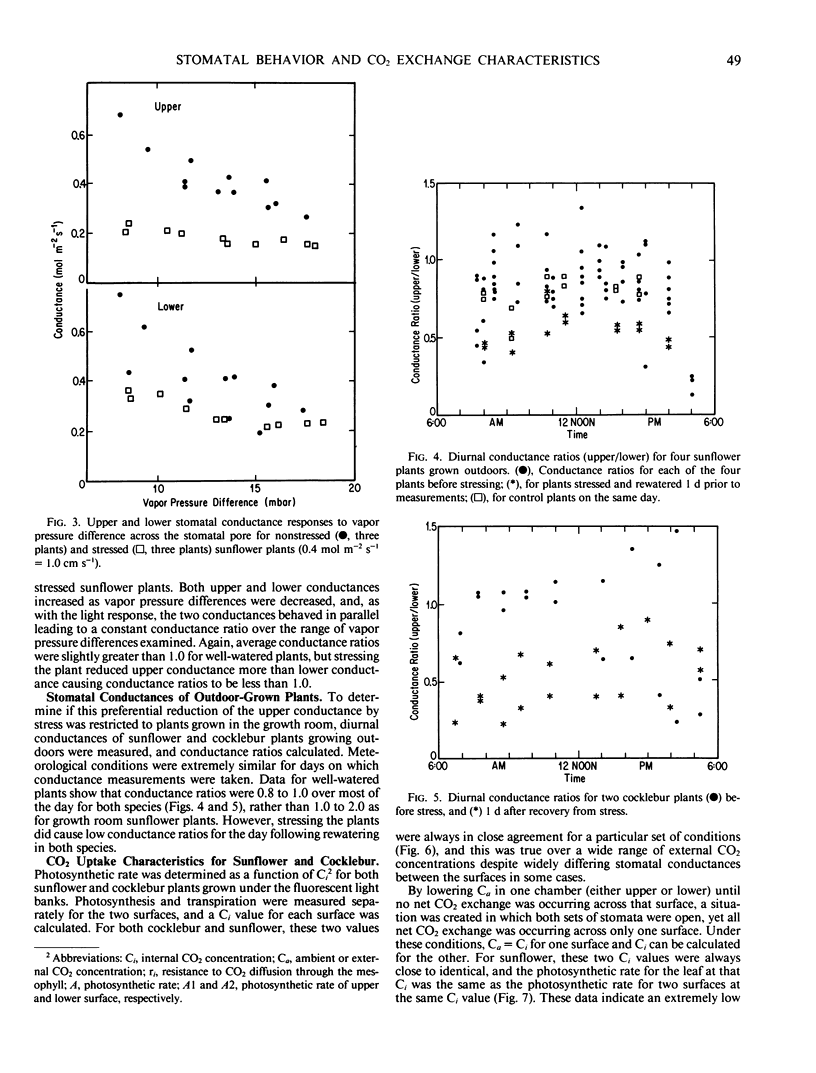
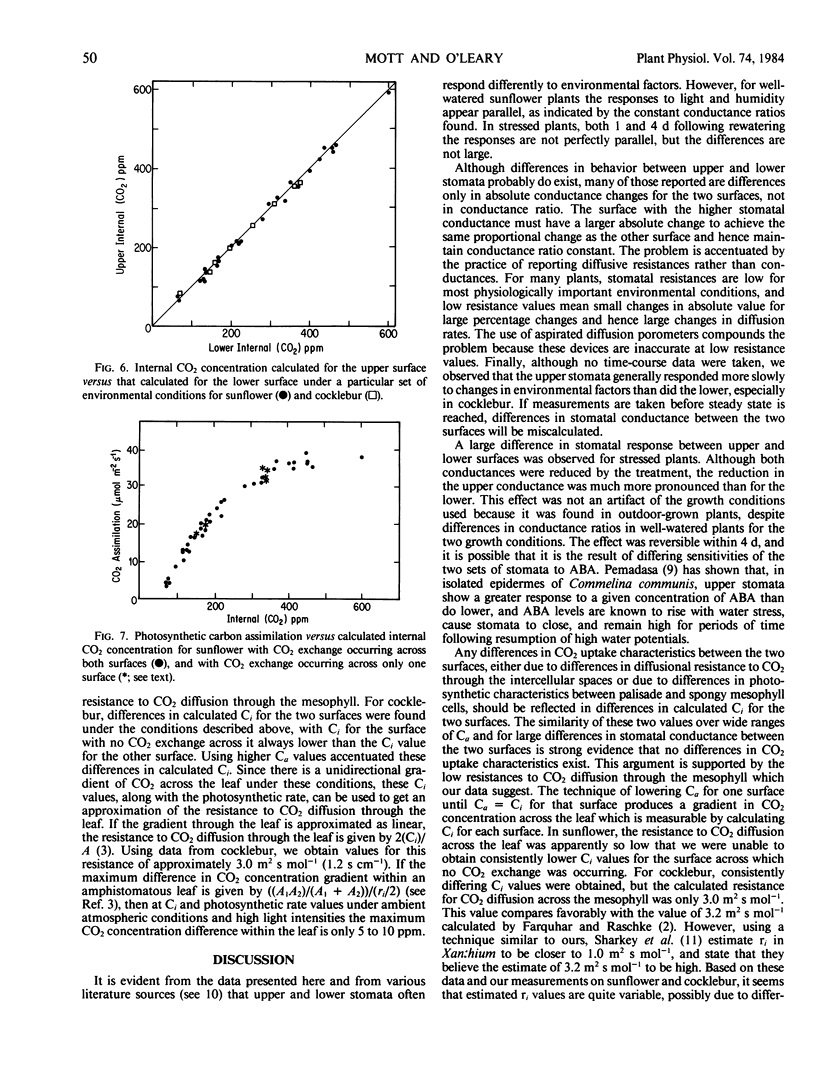
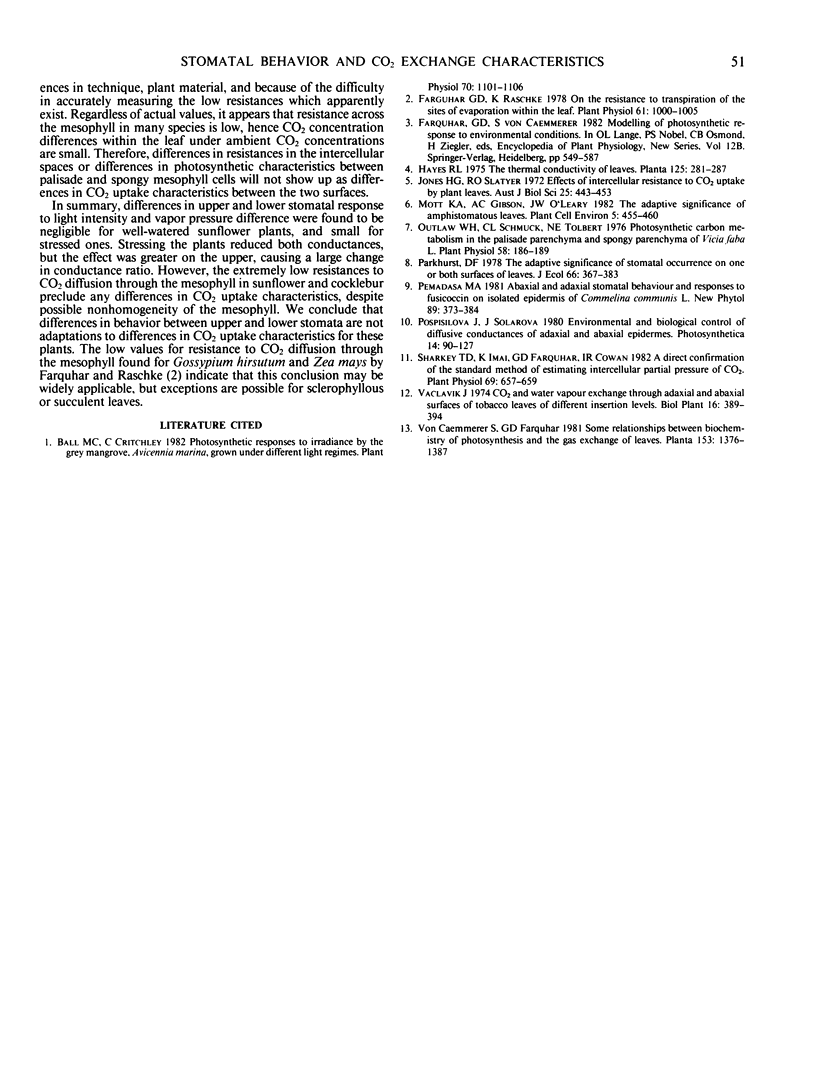
Selected References
These references are in PubMed. This may not be the complete list of references from this article.
- Ball M. C., Critchley C. Photosynthetic Responses to Irradiance by the Grey Mangrove, Avicennia marina, Grown under Different Light Regimes. Plant Physiol. 1982 Oct;70(4):1101–1106. doi: 10.1104/pp.70.4.1101. [DOI] [PMC free article] [PubMed] [Google Scholar]
- Farquhar G. D., Raschke K. On the Resistance to Transpiration of the Sites of Evaporation within the Leaf. Plant Physiol. 1978 Jun;61(6):1000–1005. doi: 10.1104/pp.61.6.1000. [DOI] [PMC free article] [PubMed] [Google Scholar]
- Outlaw W. H., Schmuck C. L., Tolbert N. E. Photosynthetic Carbon Metabolism in the Palisade Parenchyma and Spongy Parenchyma of Vicia faba L. Plant Physiol. 1976 Aug;58(2):186–189. doi: 10.1104/pp.58.2.186. [DOI] [PMC free article] [PubMed] [Google Scholar]
- Sharkey T. D., Imai K., Farquhar G. D., Cowan I. R. A Direct Confirmation of the Standard Method of Estimating Intercellular Partial Pressure of CO(2). Plant Physiol. 1982 Mar;69(3):657–659. doi: 10.1104/pp.69.3.657. [DOI] [PMC free article] [PubMed] [Google Scholar]


